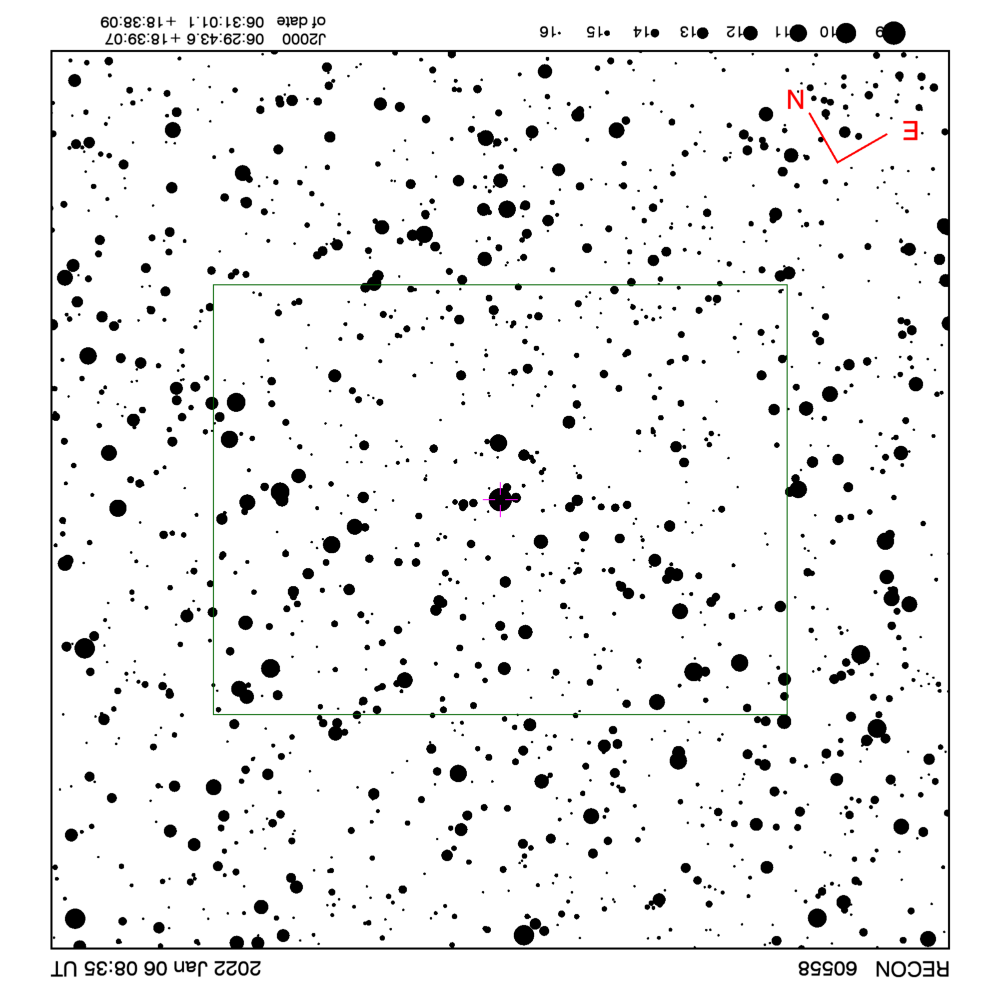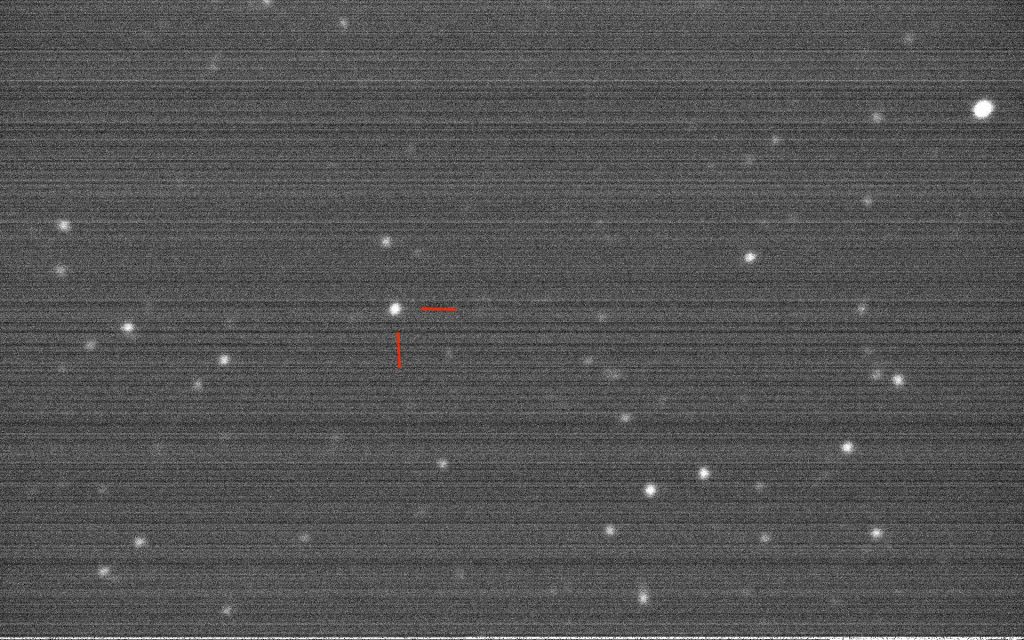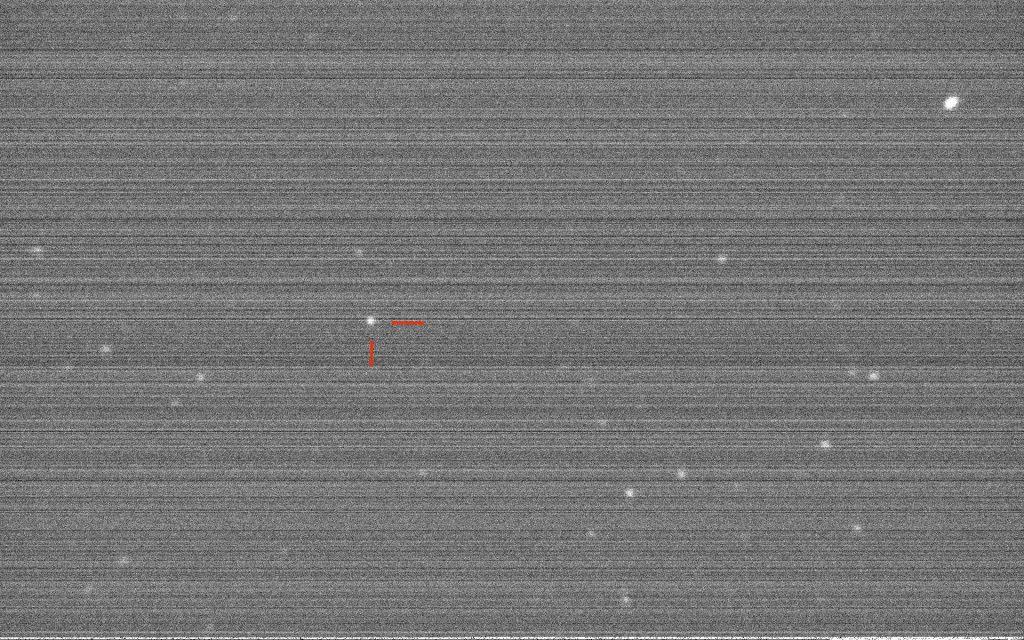Discovered by Spacewatch in 2000, Centaur (60558) Echeclus has become a centaur of particular interest due to comet-like activity over the past two decades. In 2005, a cometary coma was discovered around Echeclus, and in 2006 the centaur was given a cometary designation of 174P/Echeclus. This active centaur reached perihelion (closest approach to the Sun) in April 2015, and additional outbursts were measured in 2011 when it was 8.5 AU from the Sun and 2017 when it was 7.3 AU.
During this occultation event, Echeclus will occult a very bright 9.9 magnitude star in Gemini. Because we can obtain very high signal to noise on this bright of a star, this occultation opportunity will be very rich scientifically for all telescope sites that are able to record data, since we will be able to probe the region around the centaur for coma activity.
Event Details
Visit the Event Detail Page for Echeclus for information on exposure time, star location, and recording window. Note the the star chart on the event detail page shows the orientation of the field as it appears on a MallinCam system rather than a QHY system. For the QHY field of view, scroll to the bottom of this page.
Pre-Event Checklist
- Complete the RECON Campaign Signup Form for this event. Some participants have had trouble using Internet Explorer to sign up when there are more than one upcoming campaign. We recommend using an alternate internet browser. Submissions are updated hourly on our Signup Status Page.
- Make sure to charge your laptop and battery pack fully. Verify that systems are charged. This is easy for the laptop but sometimes the battery packs can be confusing and aren’t really charged when you think they are.
- Print this page or have it available by some electronic means that does not require a data connection. Many sites are remote and may not have cell phone coverage.
- Make sure your laptop is in airplane mode during data collection.
Feel free to contact the RECON leadership team anytime by emailing tnorecon-org@mailman.boulder.swri.edu.
Observation Protocol
Make sure to log your observations (any data that are saved) either on a RECON logsheet (to be scanned later) or on an electronic file. Details about operating the camera and saving data can be found in the guide. Here are some reminders about the logsheet contents:
- Use one entry per dataset (series of images) collected.
- Use the UT time (HH_MM_SS) as shown on the green banner on the top of the screen at the end of the capture as the label in the left-most column on the logsheet. Don’t use an approximate time from some other means. This is used for finding the files, not documenting the time. If you miss the banner, you can browse the disk to find the folder that was written.
- Make sure to write down the observing location (lat/lon/alt) of your site on the logsheet. It is best to use a cell phone GPS app, not the SharpCap information for this position as a backup for the position.
- The telescope name is the community name for that telescope (eg., Klamath Falls), the laptop id is the RECONxx number on the lid, the camera and the batteries have their own id codes as well.
- Make sure to write down the FULL names of all team members on the logsheet. This is easiest if everyone writes down their own name. This is used for credit in the publications.
- Do not use a logsheet on more than one night. Start a fresh one each night, and don’t expect that the information you provided on a previous night is good enough. Fill them out completely each night.
Finding Charts
The following star chart is the same as that shown in the event detail page but rotated to match the field of view with the QHY antenna during event time.

Image of Star Field



Important Reminders
- Control lighting – laptop screen or flashlights should not shine on the front of the telescope tube. You can’t do anything about the moon but you don’t need to make it worse.
- Keep target star somewhat near the center. Use the lowest rate possible for guiding. It should be very slow so that there is minimal to no smearing of the image during an exposure. Rate 1 works best most of the time but may not be enough if working near the zenith. The ideal is to not use any guiding corrections at all.
- Vigilance is required while collecting data. Tracking is usually quite good with the RECON telescopes but its behavior can change. You will have to determine a safe interval between checks if constant supervision is not possible.
- Arrange the field placement to get the target star near the center of the frame throughout. However, nice placement of surrounding field stars is more valuable than perfect centering of the target star.
- The laptop does not sleep or hibernate. Closing the lid does nothing. To turn the computer off you must explicitly command Windows to turn the power off.
- You can change the display stretch (lightning bolt symbol on Display parameters tab) even while collecting data.
- If the GPS status says “Bad data” you must fix the situation. Without GPS data support, the data are indeed bad.
- For the 1-2 minutes around the predicted mid-time, do not guide at all unless it is really, really necessary.
Post-Event Details
Regardless of whether your team was able to collect data, we need all teams to provide a log of their efforts. This will include details of data if your team collected data. Either save the electronic version of your log sheet and upload both your videos and observation log with your data to uploaded to SwRI in Boulder or send it via email to the project leader. For more information procedures for uploading data, visit Reporting Observations. Special arrangements will be made upon request for uploading non-RECON system data.
